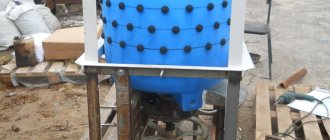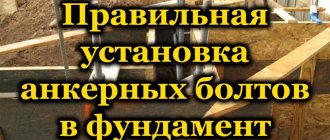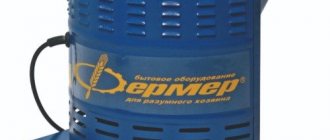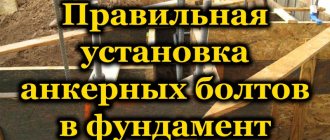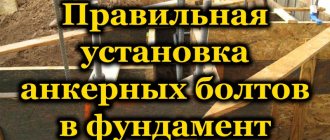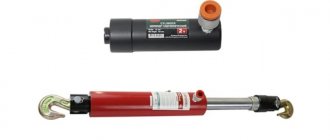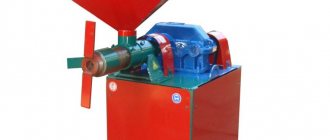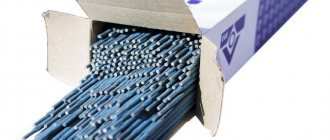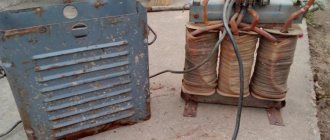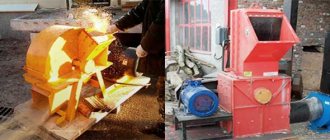Owners of private houses almost always maintain farmsteads and especially love to raise poultry. But from the moment when tiny yellow balls run around the yard, causing tenderness, to a huge dish with an appetizingly fried chicken, some time passes, filled with the hassle of caring for and raising and, by the way, in this interval there is a period when the bird has to be slaughtered and pluck. This process almost plunges some subtle natures into a deep faint, but, nevertheless, it cannot be avoided.
Plucking with your own hands, even for villagers accustomed to any kind of work, is not only an unpleasant task, but also quite lengthy and tedious. If you have to process two or three carcasses, then that’s all right, but if you need to slaughter a dozen or two chickens to load into the freezer or take to the market, then the work may take all night. And if we talk about farms, where hundreds of carcasses have to be processed, then we cannot talk about manual labor at all. And the industry, of course, took care of automating the plucking process and launched special feather picking machines on the market.
Such devices make it possible to speed up the removal of feathers from a slaughtered bird tens of times, while the quality of work is quite high: the carcass is completely free of feathers and fluff, is not damaged and has an excellent presentation.
We are sure that every private poultry farmer would like to have such a device for plucking birds at home, but its cost is quite high, and not everyone can afford it, and its payback, on a small farm, can take years. We suggest not to be upset about this, but once again to be smart and build such a device yourself.
Let's first take a look at what a feather removal machine actually is. This device, operating on the principle of a centrifuge, consists of a drum, the entire inner surface of which, as well as the bottom, is studded with rubber beating fingers. The bottom of the feather removal machine is not rigidly connected to the drum and is a separate moving part. There is an output tray at the bottom through which the removed pen comes out. The device operates from a single-phase one and a half kilowatt motor.
When plugged into the network, the bottom of the device begins to rotate quickly, constantly turning the carcass over, rubber fingers hook the feather and pull it out, the water pouring from above washes it out through the exit tray. In just a minute, one or two chickens will be cleanly plucked and ready for cutting.
Making a feather removal machine with your own hands
Owners of private houses almost always maintain farmsteads and especially love to raise poultry. But from the moment when tiny yellow balls run around the yard, causing tenderness, to a huge dish with an appetizingly fried chicken, some time passes, filled with the hassle of caring for and raising and, by the way, in this interval there is a period when the bird has to be slaughtered and pluck. This process almost plunges some subtle natures into a deep faint, but, nevertheless, it cannot be avoided.
Plucking with your own hands, even for villagers accustomed to any kind of work, is not only an unpleasant task, but also quite lengthy and tedious. If you have to process two or three carcasses, then that’s all right, but if you need to slaughter a dozen or two chickens to load into the freezer or take to the market, then the work may take all night. And if we talk about farms, where hundreds of carcasses have to be processed, then we cannot talk about manual labor at all. And the industry, of course, took care of automating the plucking process and launched special feather picking machines on the market.
Such devices make it possible to speed up the removal of feathers from a slaughtered bird tens of times, while the quality of work is quite high: the carcass is completely free of feathers and fluff, is not damaged and has an excellent presentation.
We are sure that every private poultry farmer would like to have such a device for plucking birds at home, but its cost is quite high, and not everyone can afford it, and its payback, on a small farm, can take years. We suggest not to be upset about this, but once again to be smart and build such a device yourself.
Let's first take a look at what a feather removal machine actually is. This device, operating on the principle of a centrifuge, consists of a drum, the entire inner surface of which, as well as the bottom, is studded with rubber beating fingers. The bottom of the feather removal machine is not rigidly connected to the drum and is a separate moving part. There is an output tray at the bottom through which the removed pen comes out. The device operates from a single-phase one and a half kilowatt motor.
When plugged into the network, the bottom of the device begins to rotate quickly, constantly turning the carcass over, rubber fingers hook the feather and pull it out, the water pouring from above washes it out through the exit tray. In just a minute, one or two chickens will be cleanly plucked and ready for cutting.
Feather drum
Let's talk about how to make a do-it-yourself feather removal machine with a drum. It works like a drill attachment, only this attachment is longer. The drum is located on the support axis. During production, you can get by with a low-power electric motor and a simple pulley gearbox. This pinching machine can process any number of carcasses, and the size does not matter.
The drum itself is installed on the frame, a bag is hung from below to collect feathers, after which you can clean as many birds as you like.
Punching fingers for a homemade pen removal machine
As you can see, the main working elements of the device are the striking fingers. It is impossible to make them yourself, so our feather removal machine will begin to be built by purchasing them.
The machine may require up to 120 pcs. such elements. They are also not cheap - for one dollar you are unlikely to be able to buy more than 3-4 rubber fingers, but do not be discouraged ahead of time - in fact, this will be almost the only major investment in this project, everything else can be found in own farm.
When ordering beaters, keep in mind that they come in different sizes and are selected depending on the type of bird. So, when you are planning to pluck broilers, make sure that you do not receive old fingers intended for quail.
Types of plucking attachments
Drill attachments for plucking poultry are divided into two main types. These are nozzles with finger sizes up to 5 cm and from 9 cm. For plucking small poultry, nozzles with finger sizes of 5 cm are used. If you need to remove feathers from bird species such as geese or turkeys, then they will need devices with fingers no smaller than 9 cm
You can use not only attachments for plucking poultry, but also special machines. These machines are barrel-shaped with the punching pins located inside. The device is driven by an electric motor, and the closed walls of the product eliminate the possibility of scattering feathers throughout the workplace.
The production produces pluckers, both stationary and attachments. The cost of stationary ones, called feather removal machines, is much more expensive, so it makes sense to buy them if you have to process several dozen carcasses every day.
Assembling a poultry plucking device
As a container, that is, a drum for a pen-picking machine, you can use a plastic or metal round container, the height of which should be approximately 80-90 cm and the width 70 cm. The plastic should be very durable, and the metal should be at least 1.2 mm thick . The walls should not bend or crack under the influence of carcass impacts, and the rubber fingers should be secured very firmly. Since the drum is still separated from the bottom, it can easily be built from the body of an old round washing machine.
Along the bottom of the drum, up to about half or 1/3, and along the bottom, which is a circle with a diameter similar to the container, holes for the beaters are drilled with a wide drill, at a distance of 3-4 cm from each other. The diameter of the holes should be such that the narrow part intended for installation, the fingers fit snugly in the sockets.
Installing the hammer fingers is quite a task, you will break a sweat and spew several megabytes of profanity into the air while getting everything in place. Dipping the elements into some kind of slip-promoting liquid, such as oil or detergent, can make the job somewhat easier.
Making a drum for removing feathers
To create a drum for a feather removal machine, it is necessary to have beaters.
The purpose of the parts is to remove feathers from carcasses. Making beaters at home is considered impractical. The only option is to purchase from specialized stores selling agricultural goods. You can purchase the part in online stores.
For a homemade design, you need to purchase about 100 pieces of beaters. The price of one copy is from 15 to 40 rubles.
There are several sizes of kick fingers. The large size is necessary for processing goose, the small beating fingers are intended for cleaning quail.
The existing types of beaters are presented in the table:
| Purpose | Description of the fingertips |
| For small birds | Length – 4.5-5.5 cm, diameter – 1 cm. Advantage – presence of horizontal notches. Used for partridges, quails |
| For removing feathers from chickens and ducks | Length – 9.7 cm. The main advantage is the removal of the main plumage and fine fluff. Does not damage birds' skin |
| Universal look | Suitable for large birds: geese, broilers, turkeys. Characteristics: optimal level of rigidity, presence of large notches. Part length – 9.3 cm |
| Parts for industrial equipment | The material of manufacture is high strength rubber. Used for linear rotary devices (industrial production). Finger dimensions: length – 14 cm, diameter – 1.95 cm |
| Feather raking parts | Method of application: installed on a rotating disk. Effectively removes plucked feathers |
Choosing fingertips
Hello dear farmers! In this article we will look at how to choose the right type and calculate the number of strikers for making your own feather picker or drill attachment.
First, let's look at what beat fingers are (or simply beats, pen fingers).
A hammer pin is a rubber part shaped like a regular pin, with a seating groove from 10 to 25 mm and a length from 50 to 300 mm, depending on the purpose and installation location. The beaters remove the feather due to the frictional force generated when there is contact between the rubber and the bird carcass. They have different shapes of the working surface depending on the type of feather being removed and the type of bird.
The main characteristics of feather fingers are: shape, length, bore diameter, tensile strength, Shore rubber hardness, elasticity and color.
The shapes of the beats are:
To choose the right type of plucking fingers in shape and size, you must know what kind of bird you will be plucking: quail, broilers, chickens, ducks, geese or turkeys.
For quail you need a small finger up to 50mm long and a landing diameter of 10mm. The quail is a small bird, so it is necessary to exclude the possibility of the bird getting stuck between the fingers. If you use fingers 90-100 mm long, the carcasses will fall between the fingers, or these beaters must be installed very often with a minimum distance between them. And this significantly increases the number and, accordingly, the price of purchasing fingers.
Boilers, chickens and turkeys have mostly small feathers, for the removal of which ball-shaped fingers (or spheres) with a length of 90-100mm and a fit with a diameter of 20mm have proven themselves.
Waterfowl ducks, ducks and geese have large feathers, for which ring-shaped fingers (or a ring) with deep ribs, 90-100 mm long and a landing with a diameter of 20 mm work well for plucking. The distance between the ribs of the beel corresponds to the thickness of the pad of the lower part of the feather, which holds the feathers in the skin of the bird.
In order to pluck different birds on one machine, we recommend combining the beating fingers with spheres and ring fingers in equal proportions.
For household centrifuge-type feather removal machines, soft fingers with a value of (48-55 Shore units) are used. In this type of equipment, the bird hits the finger under its own weight; if it is hard, the likelihood of skin tearing increases significantly. For beating drums and feather pick-up attachments, it is also better to use soft fingers, because... It is very difficult to accurately calculate the hand strength with which you need to press the bird to your fingers.
For industrial conveyor lines, stiffer pins with a value of (60-70 Shore units) are used.
How to quickly and easily pluck a poultry feather
There are three main methods of plucking poultry used today:
- preliminary, when the killed carcass is placed in hot water for 1 minute 2-3 minutes after death, after which the feathers can be manually removed without any problems;
- combined consists of immersing under water and placing in a cloth or bag for 10 - 20 minutes to create a bath effect so that the feathers can be easily removed by hand;
- mechanical using various attachments and specialized devices for quickly removing feathers from the carcass.
Plucker
The latter method is used on poultry farms and large farms. It allows you to quickly clean the bird’s body of feathers and down without damaging them. In this way, the carcass is used separately and the feathers separately, allowing the farmer to increase his income level.
If each bird is plucked by hand, it requires a large number of employees. In a competitive environment, poultry farms will go bankrupt or the cost of their products will increase several times.
Plucker attachment
However, the first two are often used on small farms, as they do not require any additional financial costs. Treating the carcass with hot water allows you to clean it of possible parasites that were on its body. But it is worth considering the time costs associated with plucking chickens and other types of poultry. To save time, farmers produce or buy devices to automate the work process themselves.
What attracts the nozzle
Special attachments allow you to automate the process and process more carcasses during the working day. Here are its main advantages:
- increase in productivity;
- reduction of labor costs;
- reducing the cost of the final product;
- lack of thermal treatment of poultry.
Centrifuge plucker
That is why it is very popular at large production facilities. There are several types of machines on the market that use different principles to treat poultry. That is why you need to understand how each type works to choose the best option.
There are models on the market for different types of birds. This is especially true for plucking turkeys and quail. They are quite difficult to process manually or using a centrifuge. Turkeys may not fit into the device, and quails, due to their small size, get lost in it.
Important. When using attachments, the skin of the carcass is not damaged, which ensures its presentation. But you won’t be able to completely get rid of feathers. Basically, the flywheels remain, which need to be removed manually. Due to the lack of a special bag for collecting feathers and down, it is necessary to clean the area.
The entire range of finger pins from our production -> here
The striking fingers are the working part of the equipment that removes the feathers from the bird. Removal of the feather is achieved by rubbing the feathered surface of the bird against the beaters. In this case, the size, shape and rigidity of the feathering finger depend on the bird that needs to be plucked.
The beating fingers consist of a special rubber, the composition and properties of which vary depending on the characteristics of the bird and the method of plucking (home or industrial).
How to choose hitting fingers?
When choosing strikers for a feather picker, you should consider the differences between them.
The main parameters characterizing the striking fingers:
1. Striker size 2. Shape 3. Tensile strength 4. Softness
For quail, small chicken and other small birds, beaters with a total length of 50 mm are used.
Working length – 45 mm. The pin mounting hole is 10 mm. Landing groove – 2 mm. If the wall thickness of the tank you are using is thinner than 2 mm, you should use washers. The finger should fit tightly. Quail feather pluckers are made of white and black rubber. White rubber plucks the bird more delicately. When working with white fingers, some inaccuracies in scalding and the time spent in the scalding can be tolerated! For example, scald the bird in hotter water or keep it in water for longer than the specified time. Black rubber has standard plucking characteristics. By adhering to technology, you will also get excellent results!
For large birds - chicken, broiler, duck, turkey and goose, feather fingers with a total length of 94-97 mm are used. Working length – 80-85 mm. Mounting hole – 20 mm. Landing groove – 2.2 mm. If the tank wall thickness is thinner than 2.2 mm, you should use washers.
There are two main forms of strikers for large birds:
- ring (finger with horizontal ribs)
- ball (surface of the finger is pimply)
For chicken and broiler - ball-shaped fingers. This shape plucks fluff better and provides a more delicate plucking.
For duck, goose and turkey - ring shape. Ring fingers are better at plucking tougher, larger feathers.
If you keep different birds, then ball and ring fingers can be combined in a 50-50 ratio, staggered.
Tensile strength . Rubber strength should not be confused with stiffness or hardness. The higher the strength, the better the rubber, the more elastic and, accordingly, the longer it will last. We offer pins with a strength of 13 MPa, 20 MPa and 25 MPa.
Softness . Centrifuge-type feather removal machines use special soft pins (48-55 Shore units). Plucking fingers used in poultry farms are not suitable for home machines because they are too hard. The fact is that poultry farms usually have rotor-type feather removal machines, where the bird, suspended by its legs, moves between rotating rotor disks, on the surface of which there are beating fingers. Feather centrifuges are based on a different principle. Here the bird is thrown into the tank and, spinning chaotically and hitting the beating fingers with all its weight, is plucked. Therefore, on such machines it is necessary to use softer striking fingers.
We offer black rubber fingers with a softness of 55 units. Shore and white rubber - 48 units.
See the entire range of finger pins here.
Now that we have decided on the choice of beating fingers, it is important to know that for high-quality plucking of the bird, it is necessary to scald it correctly. The procedure for preliminary preparation of birds for plucking is described here.
How to install beaters in a feather removal machine?
For those who make a feather removal machine with their own hands or those who change the striker fingers for the first time, you need to know that you do not need special tools to install the striker fingers. Simply insert them into the hole and pull until they are fully secured. When a finger reaches the end of its service life, simply cut it off with a knife and insert a new one.
How to make kicking fingers with your own hands?
The hammer finger is made using a certain technology, which is impossible to recreate at home.
Source: https://www.pluck.com.ua/vse-o-pticevodstve/bilnye-palcy-bily/
Drum pluckers
This is the most popular type of machine that is used in industrial facilities and small farms. They are distinguished by their low price and ease of use. This is a small drum with beaters on the outside. It must be used as follows:
- secure the bird carcass or hold it in your hand;
- present the nozzle to the bird and turn it on;
- process until completely free of fluff and feathers.
Drum plucker
It is inconvenient to use this unit for working with small birds. Most often, its use is justified for plucking geese, turkeys and chickens. Quails and other small birds are difficult to work with.
You can only work with one carcass at a time. Therefore, large poultry farms rarely use these devices in their work. Most often, farmers create an analogue of this machine on their own. It is worth considering the basic methods of creating pluckers from improvised means.
Feather removal attachment for Duckmaster drill for plucking poultry feathers
Duckmaster makes the work of farmers much easier by offering a variety of drill attachments that are made from durable materials. There are various models that differ:
- diameter;
- number of fingers;
- finger stiffness;
- material;
- compatible with drill and screwdriver;
- productivity;
- purpose.
Feather removal attachment for Duckmaster drill for plucking poultry feathers
Most types of products are used for medium-sized birds, and when breeding turkeys and quails, special models are needed, since their sizes differ markedly. You can purchase it in specialized stores or online. Most companies today provide delivery throughout the country with the help of transport companies.
How the devices work
Before you start making your own device, you need to understand the principle of its operation. A pinching machine is a container with rubber pins. These fingers have a special surface that can grab feathers and pull them out. Thus, without any effort, you can get several processed carcasses in a matter of minutes.
Such devices are available in several modifications:
- With a centrifuge. Round or vertical triangular containers with punching fingers inside. The bottom unwinds at high speed, the carcass also begins to spin and gradually becomes free of feathers. To increase efficiency, a small amount of water is poured into the device - it will protect the carcasses from damage and wash away all excess. Small birds (quails, chickens, ducks) are loaded into it. It is not profitable to use them at home, so other types are suitable for households.
- With a drum. Here the motor drives the drum. The fingers are located only on the outside. The person must hold the bird close to the rotating rotor, constantly adjusting the pressure. You can clean carcasses of different sizes, but the smallest ones are inconvenient to process.
- Special attachments for power tools. They are distinguished by their versatility (you can pluck any bird), but they are not very convenient to work with: you have to hold the carcass with one hand and carry out processing with the other. The only justification is that such attachments are inexpensive.
Of course, mechanization of the process has many advantages, but there is also a significant disadvantage - high cost. , only farmers or individual business owners who regularly sell livestock buy such devices
But even when using at home, you want to minimize costs, which is why these days a self-made pen removal machine has gained popularity. There may be several options.
Classification and principle of operation of machines
The very first such machine appeared at the beginning of the last century from one inventive peasant. And only in the 60s, after a slight modification, they began to be used in large poultry factories, and since 2006 they have been mass-produced by small firms for farms. All of them are classified according to the plucking method:
- Machine tools. They function together with the operator, whose job is to prepare the carcass for feather removal. The worker soaks the slaughtered birds in hot water for 2-3 minutes, then lowers them into the container of the machine. In it, with the help of a rotating centrifuge and beating fingers, rapid plucking occurs. In one minute you can process up to 4-5 carcasses. Machine tools are used in large and medium-sized poultry farms.
- Household machines. These are special attachments designed for drills and screwdrivers. They are used by hunters, as well as owners when slaughtering poultry on their personal farmsteads.
- Centrifugal. These are autonomous cars. They operate from a 220 volt network. Water is supplied to them to wet the feathers of the slaughtered bird. There is a rotating bottom with hammer fingers. These cars are the most popular among the population. Therefore, they are most often homemade, made by the owners themselves according to drawings from the Internet.
- Rotary machines. Here the carcass is carefully brought to the rotating drum with fingers and lightly pressed. In this case, the worker turns the bird on either untreated side. Plucking time is half a minute. Carcasses of different sizes can be processed. Before plucking, the bird must be soaked in boiling water.
Despite many modifications of such devices, the principle of operation has not changed over the century. All have a rotating plane and striking fingers. And the operating principle is as follows:
- carcasses of various birds scalded with hot water (70 - 80 g) end up in the tank of the machine;
- Due to the rapid rotation of the bottom, the carcasses spin and hit rubber fingers located on the walls of the container. As a result, the feather is removed;
- During rotation, the carcass is watered with water for better cleaning.
It is worth noting that for plucking quails and ducks, feather picking fingers of different lengths and configurations are used.
And also to avoid damage to the skin, the processing time of the carcass should not exceed 40 - 45 seconds. You can pluck 2–3 individuals at the same time, but this depends on the design of the apparatus.
Feather removal machine in the form of an attachment for a screwdriver
This option is one of the simplest. Important advice: you should not try to make fingers yourself, because their cost is low.
In order to make the nozzle, you will need a blank in the shape of a tin can. But the can itself will not work, as the thin tin will bend very quickly. Use thick-walled alloy metal pipe . Attach the bottom on one side using screws, drill a hole in the center, secure the pin in it with nuts (the diameter and dimensions must match the drill chuck). Drill holes for the hammer fingers directly in the cylinder, then insert the rubber bands there - the unit is completely ready for use.
The second economical option: take a sewer pipe made of polyethylene, the diameter of which does not exceed 12 cm. Any hard material is suitable for the bottom. The pin is threaded through, the “cheeks” are tightened using nuts. The fingers are inserted according to the same pattern as described above. To increase productivity and make work easier, the drill can be attached to the table.
Manufacturing a unit based on a washing machine
To make it, an old washing machine with a fixed cylindrical container, a ready-made drive in the lower part that rotates the bottom, and an installed oil seal is perfect.
The main point of processing is to make maximum use of the standard design. Holes are made in the walls for attaching fingers, and a round plate of hard metal is attached above the bottom (the bottoms of old pots or pans are suitable). The base is attached to the axis. Holes are also drilled in the bottom.
The part that rotates should have dimensions smaller than the tank (about 5 cm). If the gap is too large, bird limbs may get in. It is necessary to equip a water drain at the bottom of the tank, while simultaneously ensuring the tightness of the axle so that water cannot get into the electric motor.
With the help of such a unit you can process both small and large carcasses.
Barrel skimmer
- A homemade feather scraper based on a barrel will work on the same principle as devices from washing machines. You need to take a plastic or metal barrel (height - 1 meter, width - 70 centimeters). It must be strong to withstand bird impacts against the sides.
- Holes for fingers are made in the lower part and on the bottom, and the drum is placed in the frame. It can be made from wooden beams or metal corners. The first option is easier to do, but the second is more reliable.
- Before the first layer of the bottom, another one should be added - for attachment to the rotation mechanism.
- To mechanize the product, you will need a 1.5 kW motor. To ensure proper protection, it is better to place the motor on a stand and move it to the side.
This is how you can make a plucking machine with your own hands without extra costs. A significant advantage of such a device is that it can be assembled from scrap materials.
Source: https://stroyka.ahuman.ru/chem-zamenit-bilnye-palcy-dlja-perosemnoj-mashiny/
Possible difficulties during production
Often, if you follow the described recommendations and general safety rules, assembling the pliers does not cause any particular difficulties. However, sometimes the main questions when building a machine arise at the design stages, when it is not possible to find all the necessary materials. Most often, they can be solved using a horizontal-loading washing machine (such as “Aurica” - it can fully provide most of the necessary materials and technical components).
It is also worth mentioning that making a pliers without modern power tools is almost impossible. To create it, you will definitely need a powerful electric drill, as well as an angle grinder (grinder), and this often requires additional investment.
The main mistakes that farmers make when assembling a homemade plucking machine:
- the absence of fingertips in the side walls - this significantly reduces the efficiency of the device;
- the bolts are not fully tightened, which leads to excessive vibration of the installation;
- excessively low belt tension between the engine and the pump causes it to jump off during operation;
- the small weight of the table means that the structure may move or even jump when starting the engine. In this case, the table needs to be additionally weighted.
A plucking machine is a necessary device not only for large but also for small farms. Despite the fact that there are a huge number of various factory models of such machines on the market, for small poultry farms they are an unjustified waste. However, you can prepare the unit yourself - this will require a standard set of power tools and spare parts from an old washing machine.
DIY feather removal machine
The device discussed below is assembled quite simply; the most expensive element here is the electric motor. Everything else can be found in landfills or using unwanted parts you have in your garage. You will also need to buy “fingers” for the pen removal machine, but they are not expensive. Let's take a closer look at how to make such a miracle of technology.
Materials and tools that the author used for homemade work: List of materials:
— engine (2-3 kW); — spare parts from an old washing machine; — steel square pipes; - plastic barrel; — steel plates; — bolts with nuts; - switch; - fingers for feather removal machine; - dye.
List of tools:
- Bulgarian; - drill; — welding; - screwdrivers, pliers, wrenches; - drill for fingers; - obedient woman
